
The Australian Bureau of Statistics (ABS) has just released the December labour force statistics and, like all of the releases this week, the data is mixed:

On the positive side of the ledger, full time employment rose by 24,500 persons to 8,051,000, partly offsetting the heavy losses (-39,400) of the prior month. However, this increase in full-time employment was offset by a fall in part-time employment of 53,700 persons to 3,370,300.
The recent changes in full-time and part-time employment are shown below. As you can see, this ABS survey is extremely volatile, making it difficult to reach strong insights from just one month’s data, but over time it’s quite clear that the growth trend in all three measures is down:
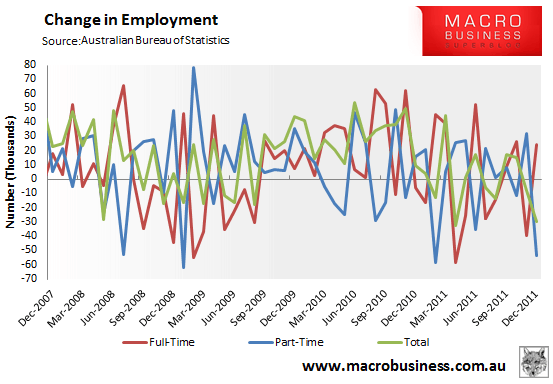
Another positive is that the aggregate number of hours worked rose by 5.6 million hours to 1,622.0 million hours; although hours worked has remained relatively flat over the past year, increasing by only 22 million hours or 0.06% which, as you can see, is historically quite unusual:
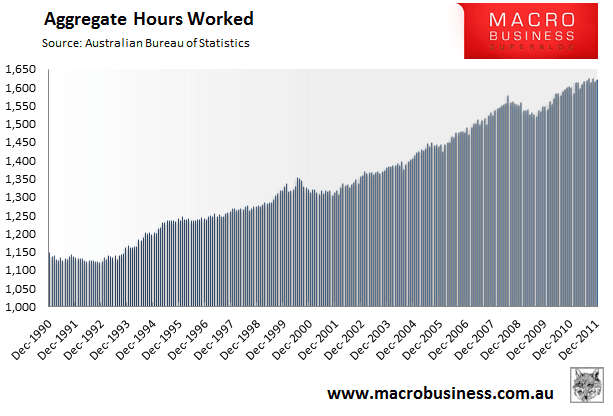
The nation’s unemployment rate remained steady at 5.2%, with the 29,300 fall in total employment offset by a -0.3% fall in the participation rate to 65.2%. A longer-term perspective on Australia’s unemployment rate is shown below:
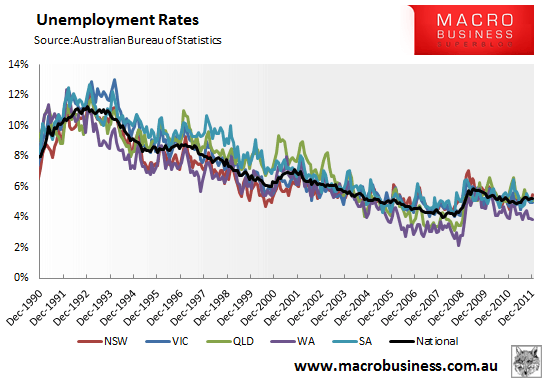
As expected, given the strenght of the state’s mining boom, Western Australia has the lowest unemployment rate (along with the ACT) and Tasmania the highest:
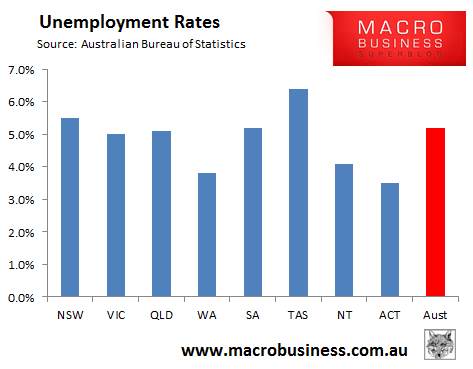
New South Wales, which has the highest unemployment rate out of the mainland states (5,5%), also experienced the largest number of job losses over the month:
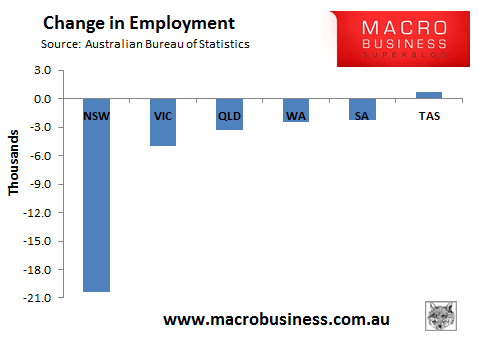
Another negative to come out of this release is that the labour underutilisation rate, which combines the underemployment rate with the unemployment rate, is starting to trend upwards, suggesting increasing spare capacity in Australia’s labour force:
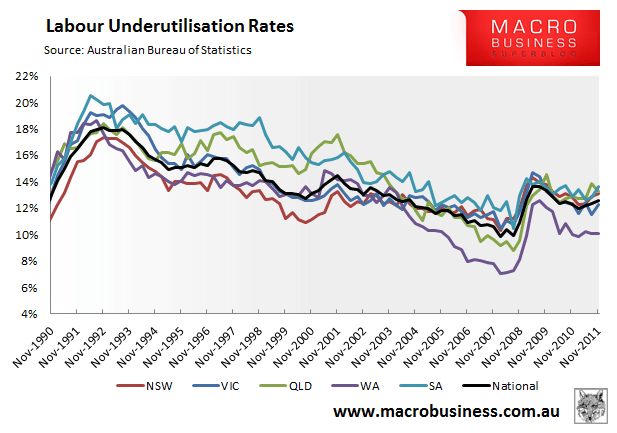
Overall, a mixed result with a welcome rise in full-time employment offset by larger losses in part-time employment, as well as increasing labour underutilisation rates.

